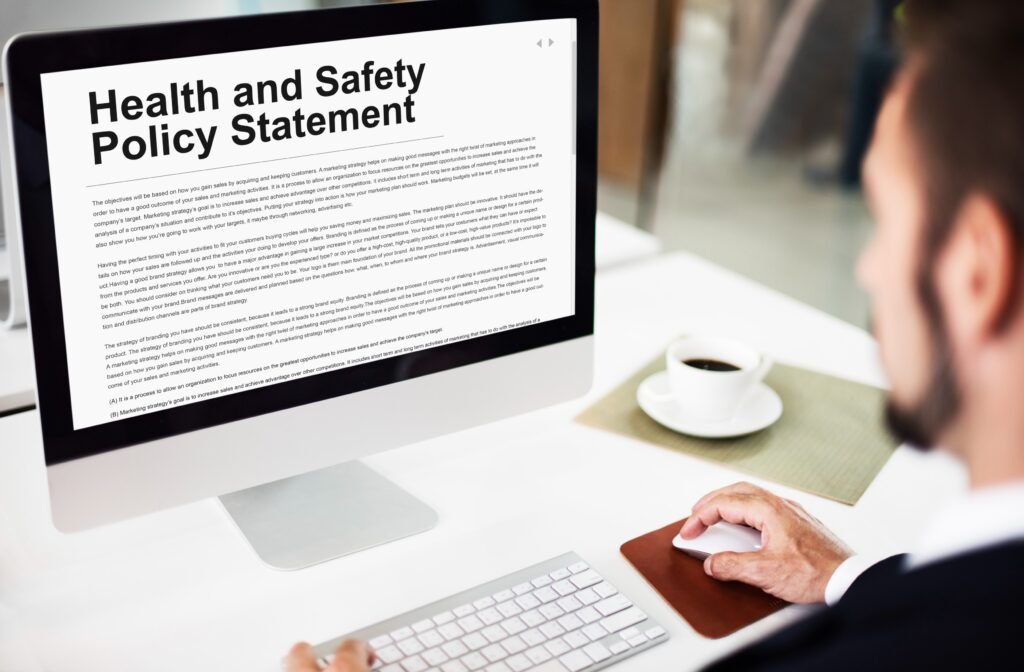Environmental and
Risk Management Services

Environmental and risk management services are essential for businesses to assess, mitigate, and manage potential risks to the environment, human health, and organizational operations. These services help organizations comply with environmental regulations, minimize negative environmental impacts, and develop strategies to address potential risks.
Here’s an overview of the main services within this field

Environmental Compliance Services
Regulatory Compliance Audits
Ensuring businesses comply with local, national, and international environmental regulations. This includes laws related to waste management, air and water quality, pollution control, and hazardous materials.
Permit Acquisition and Renewals
Helping businesses secure the necessary environmental permits (e.g., emissions, waste disposal, water use) and ensuring their timely renewal.
Environmental Reporting
Assisting with the preparation of mandatory environmental reports, such as emissions inventories, waste management reports, and sustainability disclosures.
Environmental Impact Assessments (EIA)
Conducting assessments to evaluate the potential environmental impacts of new projects, developments, or business activities.

Environmental Health & Safety (EHS) Management
Health and Safety Compliance
Helping companies implement and maintain safety standards to protect employees and the public from health hazards related to their business activities.
Workplace Safety Programs
Developing safety training programs, risk assessments, and emergency response plans to ensure a safe working environment.
Air, Water, and Soil Quality Monitoring
Monitoring environmental parameters like air quality, wastewater discharge, and soil contamination to ensure compliance with environmental standards.
Environmental Health & Safety (EHS) Management
Health and Safety Compliance
Helping companies implement and maintain safety standards to protect employees and the public from health hazards related to their business activities.
Workplace Safety Programs
Developing safety training programs, risk assessments, and emergency response plans to ensure a safe working environment.
Air, Water, and Soil Quality Monitoring
Monitoring environmental parameters like air quality, wastewater discharge, and soil contamination to ensure compliance with environmental standards.


Risk Assessment and Management
Risk Identification and Evaluation
Identifying potential environmental, financial, operational, and reputational risks that could affect a business. This includes risks related to climate change, supply chain disruptions, or exposure to toxic substances.
Business Continuity Planning (BCP)
Helping businesses create contingency plans to ensure operational continuity in the event of natural disasters, industrial accidents, or other crises.
Environmental Risk Management
Assessing risks related to pollution, environmental liabilities, natural resource depletion, and other environmental factors that could affect operations or public perception.
Quantitative and Qualitative Risk Analysis
Using various methods (e.g., scenario analysis, modeling) to evaluate the severity and likelihood of identified risks.

Sustainability and Corporate Social Responsibility (CSR)
Sustainability Strategy Development
Assisting businesses in creating sustainability strategies that promote long-term environmental stewardship and social responsibility.
Carbon Footprint Reduction
Helping businesses reduce their carbon emissions and improve energy efficiency through sustainable practices and technologies.
Green Certifications
Guiding businesses through the process of obtaining environmental certifications, such as LEED (Leadership in Energy and Environmental Design), ISO 14001 (Environmental Management Systems), and B Corp certification.
Waste Reduction and Recycling Programs
Designing waste management programs that reduce waste, promote recycling, and encourage the use of sustainable materials.
Sustainability and Corporate Social Responsibility (CSR)
Sustainability Strategy Development
Assisting businesses in creating sustainability strategies that promote long-term environmental stewardship and social responsibility.
Carbon Footprint Reduction
Helping businesses reduce their carbon emissions and improve energy efficiency through sustainable practices and technologies.
Green Certifications
Guiding businesses through the process of obtaining environmental certifications, such as LEED (Leadership in Energy and Environmental Design), ISO 14001 (Environmental Management Systems), and B Corp certification.
Waste Reduction and Recycling Programs
Designing waste management programs that reduce waste, promote recycling, and encourage the use of sustainable materials.


Climate Change Adaptation and Mitigation
Climate Risk Assessment
Evaluating how climate change (e.g., extreme weather events, rising sea levels) may impact business operations and infrastructure.
Resilience Planning
Developing strategies to make businesses more resilient to climate-related risks, such as changes in resource availability, supply chain disruptions, or physical damage to assets.
Carbon Offset Programs
Helping businesses participate in carbon offset programs to compensate for their emissions through activities like reforestation or investing in renewable energy projects.

Environmental Remediation and Restoration
Site Remediation
Identifying and addressing environmental contamination at industrial sites, including soil and groundwater cleanup.
Environmental Restoration Projects
Developing plans to restore ecosystems damaged by human activity, such as wetland restoration, habitat creation, or species recovery programs.
Hazardous Waste Management
Ensuring the safe disposal and treatment of hazardous materials, such as chemicals, asbestos, and medical waste, in compliance with environmental laws.
Environmental Remediation and Restoration
Site Remediation
Identifying and addressing environmental contamination at industrial sites, including soil and groundwater cleanup.
Environmental Restoration Projects
Developing plans to restore ecosystems damaged by human activity, such as wetland restoration, habitat creation, or species recovery programs.
Hazardous Waste Management
Ensuring the safe disposal and treatment of hazardous materials, such as chemicals, asbestos, and medical waste, in compliance with environmental laws.


Emergency Response and Incident Management
Environmental Emergency Response Plans
Creating emergency response strategies for environmental incidents, including oil spills, chemical leaks, or industrial accidents.
Crisis Management
Providing guidance on managing the aftermath of environmental incidents, including public relations, regulatory compliance, and remediation efforts.
Training and Drills
Conducting regular training programs and emergency response drills to ensure the business is prepared for environmental emergencies.

Environmental Due Diligence and Risk Mitigation
Mergers and Acquisitions (M&A) Due Diligence
Conducting environmental due diligence during M&A transactions to identify any environmental liabilities or risks that could affect the deal.
Supply Chain Risk Management
Assessing environmental risks within the supply chain, including the environmental practices of suppliers and contractors.
Legal Risk Management
Identifying potential legal liabilities related to environmental issues, such as violations of environmental laws or litigation related to environmental harm.
Environmental Due Diligence and Risk Mitigation
Mergers and Acquisitions (M&A) Due Diligence
Conducting environmental due diligence during M&A transactions to identify any environmental liabilities or risks that could affect the deal.
Supply Chain Risk Management
Assessing environmental risks within the supply chain, including the environmental practices of suppliers and contractors.
Legal Risk Management
Identifying potential legal liabilities related to environmental issues, such as violations of environmental laws or litigation related to environmental harm.


Training and Capacity Building
Employee Education
Providing training programs to help employees understand environmental risks, health and safety practices, and compliance requirements.
Leadership Development in Sustainability
Training executives and managers in sustainable practices, environmental leadership, and decision-making to drive corporate environmental strategies.

Water, Energy, and Waste Management
Water Conservation and Management
Assisting businesses with water usage strategies to reduce consumption, treat wastewater, and prevent contamination.
Energy Efficiency Programs
Helping businesses adopt energy-saving technologies, renewable energy sources, and energy-efficient processes to lower operational costs and environmental impact.
Waste Management Plans
Developing strategies for reducing, reusing, and recycling waste in line with environmental regulations and sustainability goals.
Water, Energy, and Waste Management
Water Conservation and Management
Assisting businesses with water usage strategies to reduce consumption, treat wastewater, and prevent contamination.
Energy Efficiency Programs
Helping businesses adopt energy-saving technologies, renewable energy sources, and energy-efficient processes to lower operational costs and environmental impact.
Waste Management Plans
Developing strategies for reducing, reusing, and recycling waste in line with environmental regulations and sustainability goals.

1. Environmental Compliance Services
Regulatory Compliance Audits
Ensuring businesses comply with local, national, and international environmental regulations. This includes laws related to waste management, air and water quality, pollution control, and hazardous materials.
Environmental Reporting
Assisting with the preparation of mandatory environmental reports, such as emissions inventories, waste management reports, and sustainability disclosures.
Environmental Impact Assessments (EIA)
Conducting assessments to evaluate the potential environmental impacts of new projects, developments, or business activities.
Permit Acquisition and Renewals
Helping businesses secure the necessary environmental permits (e.g., emissions, waste disposal, water use) and ensuring their timely renewal.
Why Use Environmental and Risk Management Services?
Regulatory Compliance
Ensures businesses meet environmental regulations and avoid penalties.
Risk Reduction
Identifies and mitigates potential environmental, operational, and financial risks.
Reputation Management
Demonstrates environmental responsibility and enhances corporate reputation.
Cost Savings
Reduces waste, energy usage, and other inefficiencies that lead to lower operational costs.
Sustainability and Long-Term Viability
Supports sustainable business practices that can help ensure long-term growth and resilience.
03
Environmental Approvals
Required for projects with potential environmental impacts. This includes approvals for waste management, water use, emissions, and pollution control measures. Such approvals are often granted after an Environmental Impact Assessment (EIA) is conducted.
04
Business Licenses
Approvals required for businesses to operate legally in specific industries. Examples include trade licenses, industry-specific permits, and registrations with governmental agencies.
05
Import/Export Approvals
Businesses involved in international trade must obtain approvals from customs or trade regulatory bodies before importing or exporting goods. These approvals ensure compliance with trade laws, tariffs, and international standards.
01
Identify Requirements
Determine which NOCs, approvals, and permits are required for your project or business. This varies depending on the industry, location, and type of activity.
Check with local, regional, or national government agencies to understand the specific legal requirements.
02
Prepare Documentation
Gather the necessary documents, such as business plans, environmental impact assessments (EIA), construction blueprints, safety protocols, financial records, and other supporting documents.
03
Submit Applications
If your application is successful and meets all requirements, the government authority will issue the necessary NOC, approval, or permit.
The certificate will often include specific conditions that must be followed during the course of the activity or project.
04
Review Process
Authorities will review your application, inspect your premises (if necessary), and verify compliance with legal requirements. Some agencies may require public hearings or consultations before issuing approvals.
05
Receive NOC/Approval /Permit
Submit the required applications to the relevant authorities. This may involve filling out forms, providing supporting documents, and paying applicable fees.
06
Compliance & Renewal
In some cases, NOCs, approvals, and permits must be renewed periodically. Make sure you adhere to any conditions outlined and maintain ongoing compliance with regulations.
